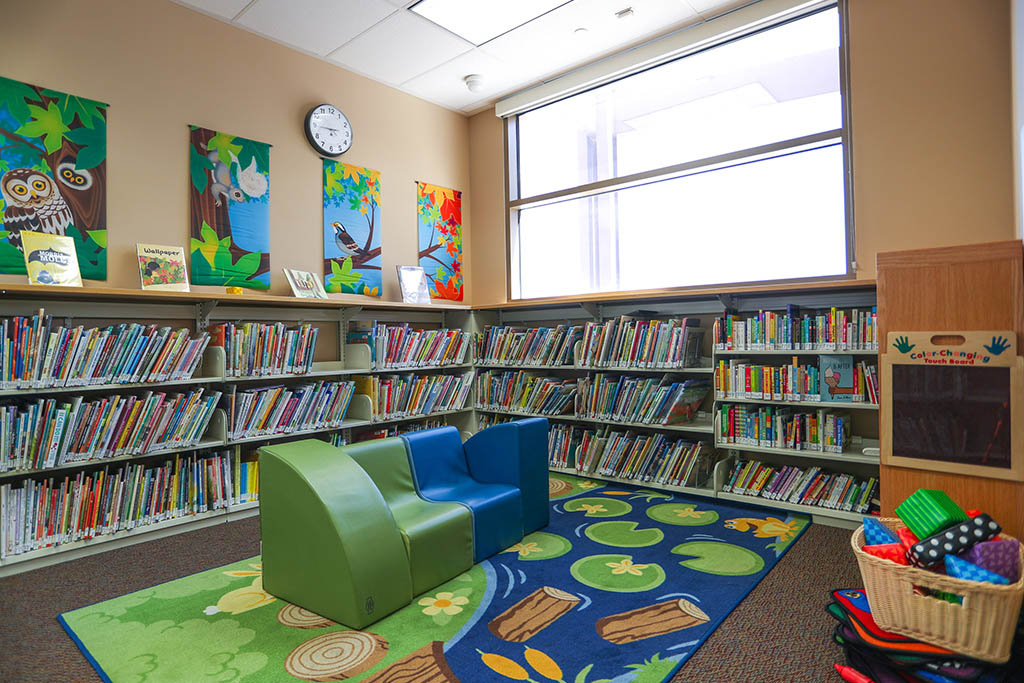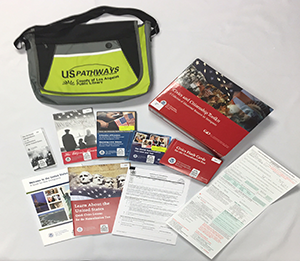Carson
Community History
Lying south of Los Angeles, just a few miles from the busy harbor at San Pedro Bay, Carson is both a new city and an old community. Long home to Native Americans, the area that would become Carson quickly fell into Spanish hands in the late eighteenth century. For nearly one hundred and fifty years, its destiny lay with the Dominguez family, whose expansive Rancho San Pedro became a center for politics and business, in addition to ranching. Their decision to sell parts of the ranch lands opened the door for small farmers, industry, and commerce beginning in the late 1800s, and by World War II, these elements were solidifying into a community. Mirroring its neighbors, the area grew rapidly in population after the war, maturing industrially and commercially, too. Within a few decades, the community had decided it was time to strike out on its own and take charge of its future. In 1968, Carson incorporated as a city. At the time, its population stood at 66,520. Though the character of the city has changed in some ways since it achieved independence and could begin to set its own priorities and goals, its growth has continued. As of 1990, Carson had 83,995 residents from a broad range of ethnic backgrounds.
The first inhabitants of what would later become Carson were Native Americans known to us as the Gabrielino Indians. When the Spanish arrived to proselytize and permanently settle the area in the late 1700s, the Indians were displaced, with most affiliating themselves voluntarily, or under duress, with the Mission San Gabriel. The Spanish government also began granting land to its citizens in California. The first recipient of such a grant in Southern California was Juan Jose Dominguez, a retired soldier. On his land, known as Rancho San Pedro, Dominguez raised large herds of cattle and horses. This ranching tradition persisted in the Carson area for more than a hundred years.
Towards the end of the nineteenth century, Dominguez’s descendants began leasing and selling some of the land of the Rancho San Pedro to small farmers who built houses, planted vegetables and grains, and raised chickens and dairy cattle. The discovery of oil in the vicinity invited refineries and drilling operations and by the 1920s present-day Carson had a smattering of other industrial operations as well. Nevertheless, it remained small in size with few commercial enterprises. This began to change just prior to World War II. When the war began, workers moved into the new tract housing to be close to their jobs in the bustling defense industries in the area; but development stalled‹only to abruptly re-start at the war’s conclusion, when Southern California’s population exploded and large residential developments began to appear. New homes attracted new businesses, with clusters of houses and businesses springing up in dry areas on good roads near schools. In the early 1960s, the establishment of California State University at Dominguez Hills gave the community a lift.
Completion of new sections of the Dominguez Channel during the 1960s also helped alleviate long-persistent flooding worries and provided newly drained land for still more homes and stores. In 1968, nearly a decade’s worth of lobbying and hard work by community leaders culminated in the incorporation of the city of Carson. In settling on the name “Carson,” the city’s residents did not stray far from their heritage. Although “Dominguez” was perhaps a more obvious choice, one of the heirs of Juan Jose Dominguez had married into the Carson family, and the offspring of this union, a John Manuel Carson (bearing, in his middle name, tribute to perhaps the most famous Dominguez of all) was an active force in developing the community early in the twentieth century. The city was named after him.
The Archives and Special Collections Department of the library at California State University, Dominguez Hills has photographs in its Local History Collection. The city of Carson also has included a number of old photographs in the historical section of its website.
Native Americans who lived in the Los Angeles area spoke a language distinct from their neighbors to the North and South of them. They have come to be known as Gabrielino, because many of those who survived European diseases and the disruption of their normal trade patterns and culture went to the Mission San Gabriel in Los Angeles, some voluntarily, others only when confronted by force.
When the Europeans arrived, they discovered many Indian villages between the Pacific Ocean and the San Gabriel mountains. The Gabrielino lived in domed, circular structures with thatched exteriors. Both men and women wore their hair long and used a vegetable charcoal dye and thorns of flint slivers to tattoo their bodies. They required very few clothes, though women usually donned deerskin or bark aprons, and all might wear animal skin capes in cold or wet weather. Those who lived near the coast ate fish and other seafood, in addition to acorns, seeds, roots, and small game animals. Passing through during the mid 1700s as part of Spaniard Gaspar de Portola’s famous expedition from San Diego to Monterey, Padre Juan Crespi observed that the Indians in the area were very friendly. Nevertheless, during the late 1700s and early 1800s, after dominating the Los Angeles area for hundreds of years, those Gabrielino who did not flee were gradually moved to Spanish missions. Many became laborers for local landowners. Most eventually adopted a more European lifestyle.
One of the more prominent villages among a cluster near San Pedro Harbor was Suangna, located on some 100 acres of land in what is now Carson. Founded hundreds of years ago in a marshy area, the village existed well into the nineteenth century and many of its inhabitants eventually went to work for the Dominguez family on the Rancho San Pedro. Archeologists began exploring the site in the early 1900s and over the years their digs have yielded such artifacts as stone bowls, arrowheads, shells, knives, and beads, as well as human bones. In the early 1970s, the California Historical Landmark Advisory Committee recognized the village as a “Point of Historical Interest,” the first Indian site in Los Angeles County to receive that designation.
In the 1920s, while still very much an agricultural community, Carson was already home to a number of oil refineries and other heavy industry. The fruits of World War II and the postwar population explosion in Southern California included a steadily growing industrial base in Carson. In the 1960s, this element of the community was strong enough to obstruct the efforts of some citizens to have Carson incorporated as a city; similarly, the eventual support of the Carson-Dominguez Industrial Council was critical to reaching this goal in 1968. Following incorporation, the city was eager to welcome new industry, although it was not so eager to deal with the aftereffects of some enterprises, particularly those such as auto dismantling plants and landfills which had located in the area when residents had no say in whether they might do so. In the 1990s, Carson was actively seeking to clean up the city’s image and environment, pleased that most heavy industry was gone and current operations (which remain an important part of the community) were contained in tidy industrial parks.
Held in January 1910, the Great Air Meet was the first air show in the United States. More than 175,000 people gathered at a site near the present-day location of California State University, Dominguez Hills, to see aircraft from around the world race and perform what appeared to be daring feats.
In 1784, California Governor Pedro Fages granted Juan Jose Dominguez a tract of more than 75,000 acres of land extending from the Los Angeles River west to the Pacific Ocean‹an expanse which today would include not only the city of Carson, but the cities of Torrance, Redondo Beach, Lomita, Wilmington, and a portion of San Pedro as well. Dominguez was a grizzled soldier, who had formerly served under Fages’ command. In 1769, he was among the men who journeyed some 400 miles from the Presidio of Loreto in Baja, California, to San Diego, and soon was earning his keep protecting Junipero Serro and his Franciscan padres as they established a series of missions. The land grant he received upon his retirement was the first issued by the Spanish in Southern California. He called the property Rancho San Pedro.
When Juan Jose died in 1809, his will specified that the property should be divided between his nephew Jose Cristobal Dominguez, who was also a soldier, and another man who had sometimes assisted him in managing the ranch. During the years that followed, Manuel Gutierrez, Juan Jose’s former steward, controlled the ranch and arranged for a man by the name of Sepulveda to live and raise cattle on a portion of the property. It wasn’t until 1817 that Cristobal Dominguez became sole owner of the ranch, now reduced in size to roughly 45,000 acres, after initiating a number of legal challenges to Gutierrez’s actions. When Cristobal died in 1825, his son Manuel Dominguez took over the ranch.
In 1826, Don Manuel built the “Dominguez Rancho Adobe,” a one-story, six-room structure which soon became his home and that of his new wife Maria Engracia Cota. They would live in the adobe more than fifty-five years. In the days before the railroad arrived, travelers often stopped at the home while en route from the harbor to Los Angeles, and because Don Manuel was an influential man, many simply came to discuss political and business matters. When the Mexican War swept California in the mid 1840s, three military councils convened at the adobe. At one point, moreover, United States Marines actually occupied the building for two days during a confrontation that was later called the “Battle of Dominguez Ranch.” Three times, Don Manuel served as alcalde, or mayor, of Los Angeles, and, once California became a United States possession, he traveled with six other delegates from Southern California to Monterey to assist in the writing of a state constitution. Fluent in Spanish and English, he was among the few men who held office under both Mexican and American rule. His ranch, too, endured the transitions. In 1858, Rancho San Pedro was the first of Los Angeles County’s original land grants to obtain from the United States government a clear Patent of Title, confirming Don Manuel’s ownership.
Don Manuel died in 1882 and his land was divided between his six daughters: Ana Josefa de Guyer, Guadalupe, Maria Victoria Carson, Dolores Simon Watson, Susana Del Amo, and Maria de Los Reyes de Francis. In 1922, the Dominguez family donated the home and seventeen surrounding acres to the Congregation of Sons of the Immaculate Heart of Mary, or the “Claretian Missionaries.” The Claretians have since operated it as Dominguez Memorial Seminary, a school for candidates for the priesthood. In 1976, the adobe’s six original rooms became a museum, with additional rooms later also restored and opened to the public.
By the 1920s, oil had been discovered in the Carson area and it wasn’t long before a number of refineries were up and running, with oil derricks, tank farms, and sprawling industrial complexes becoming a familiar part of the scenery. Companies such as Shell Oil were hives of activity during World War II, adding their own punch to the increase in jobs in the community and a subsequent post-war population surge. In the 1960s, oil company executives became influential players in organizations that impeded, then helped propel, efforts to win the incorporation of Carson as a city.
By the late 1700s, Juan Jose Dominguez was raising hundreds of horses and cattle on the Rancho San Pedro. Branded with the DR of the Dominguez family, vast cattle herds minded by vaqueros continued to shade the landscape throughout much of the century that followed, their hides shipped off to Europe for currency and supplies. In the last years of the nineteenth century, and into the next, the Dominguez heirs gradually leased or sold off portions of the ranch to European immigrants and migrants from other parts of the United States, many of whom set up small farms. The land in the vicinity of Carson slowly became a patchwork of small dairies, family farms with pens of chickens, and fields thick with barley, oat hay, lima beans, alfalfa, sugar beets, and vegetables. Amongst the farms, clumps of residential housing arose where regularly occurring floods could be kept at bay. But prior to World War II, Carson encompassed little more than small farms and a few industries. The post-war years brought a frenzy of residential building, as well as an increasing number of commercial and industrial operations, and the agricultural character of the community faded.
By the late 1950s, some citizens of the community that would become Carson were talking about the possibility of incorporation. Concerned about the lack of power they had over zoning and similar issues that affected them directly, as well as the interest Long Beach and other neighboring communities expressed in annexing Carson territory, they began to work towards incorporation. In June 1960, a committee of residents first petitioned the County of Los Angeles for incorporation of a city to be called “Dominguez.” The plan for incorporation never came to fruition, however, as local industrial leaders came out against it and its proponents failed to generate the support necessary for implementation. During the months and years that followed, persistent civic leaders tried again and again to obtain bureaucratic approval and stir up popular support for their incorporation plans. Repeatedly their hopes were dashed by the continued opposition and dawdling of industries in the community, resistance from homeowners due to fear of increased taxes and other concerns, and wrenches thrown in the works by the Local Agency Formation and Annexation Commission of Los Angeles County. But Long Beach and friends continued to covet their neighbor’s property, and the leaders of the Carson area’s civic organizations refused to surrender. Finally, in 1967, a united front of citizens and industrial leaders secured the county’s approval to incorporate and in February 1968, the community’s residents voted to incorporate the city of Carson.



























